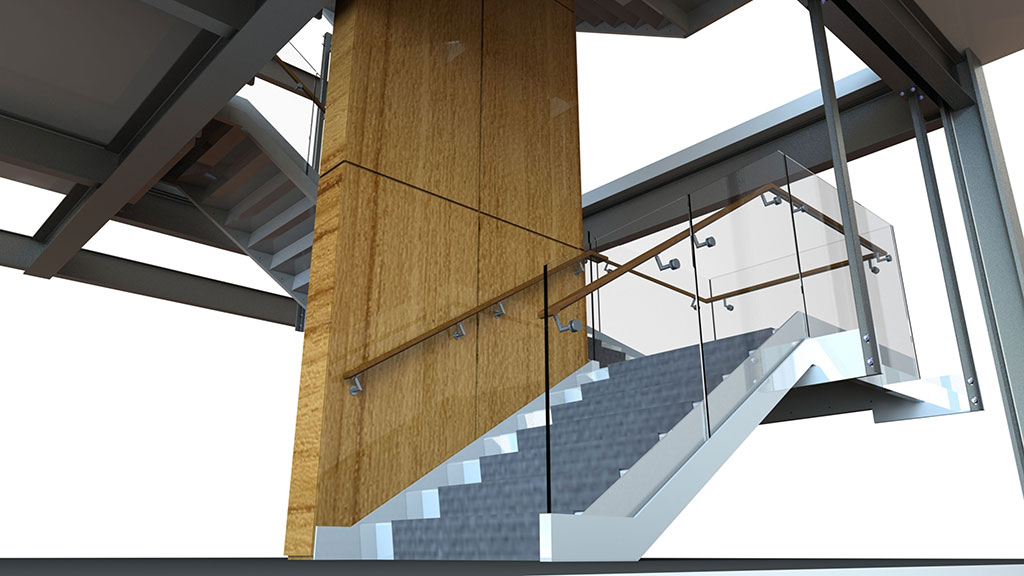
A staircase is more than a passage between floors. The right architectural inspiration can transform spaces, encourage traffic flow and act as a creative extension of the building’s brand. There are many components to a staircase designed for fabrication. The Feature Walters team has experience in design-build projects where we design the project from the ground up, keeping fabrication and installation in mind. Our entire team, including detailers, project managers, engineers, fabrication, and installation employees, work together to make your vision a reality.
Stringers
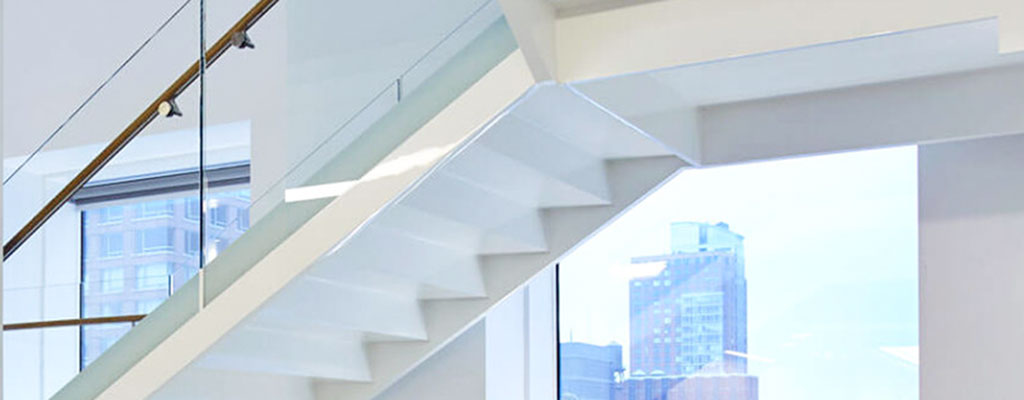
Stringers are the structural mechanism that supports the treads and risers of a staircase, which can either be open with cut-outs to allow for a more open look and feel or closed with solid sides such as glass for a more modern appearance. In production, stringers are typically fabricated and assembled using steel.
Stringer types are as follows:
- Cut stringer
- The top section of the stringer is cut to house the treads and risers.
- Eastern stringer (open/closed)
- They are also called sawtooth or open stringers. From the side view, an eastern stringer is cut out on the rise and run, usually cut on top and bottom, maintaining consistent geometry.
- Western stringer (open/close)
- They are also called closed, routed, or housed stringers. From the side view, a western stringer is a consistent ribbon with the treads and risers routed into the inside face of the stringer.
- Mono stringer
- A mono-stringer stair uses a single ‘beam–like’ stringer that supports the centre of the treads from below and typically does not contain risers.
- Wall stringer
- Attached to or built into a wall.
Treads
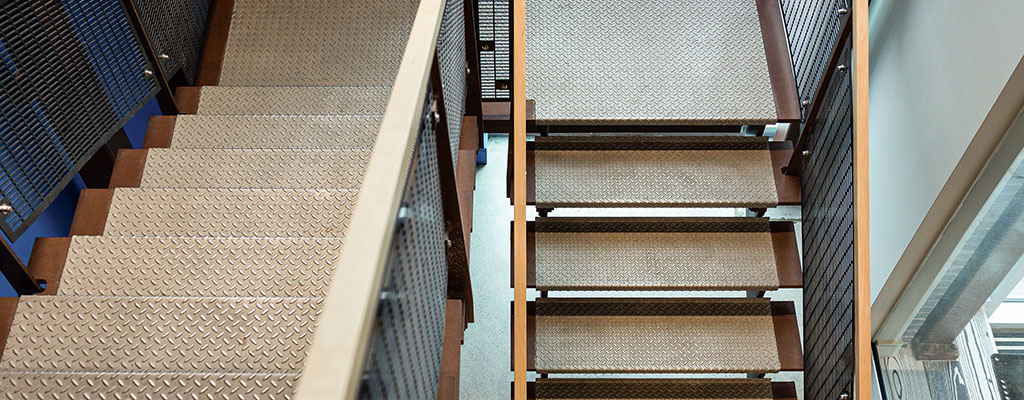
Treads are the horizontal steps that occupants walk on when using a staircase. Usually, in fabrication, they are primarily made of a steel base for a support core. They can be cladded with various for a specific interior look and feel.
Materials such as wood, concrete and metal are typically designed for high-traffic durability. Feature Walters can fabricate stringer and tread connections with fastened or welded connections depending on the finished material composition and desired design.
- Wood Treads
- Composite treads (such as concrete)
- Stone
- Steel
Nosing
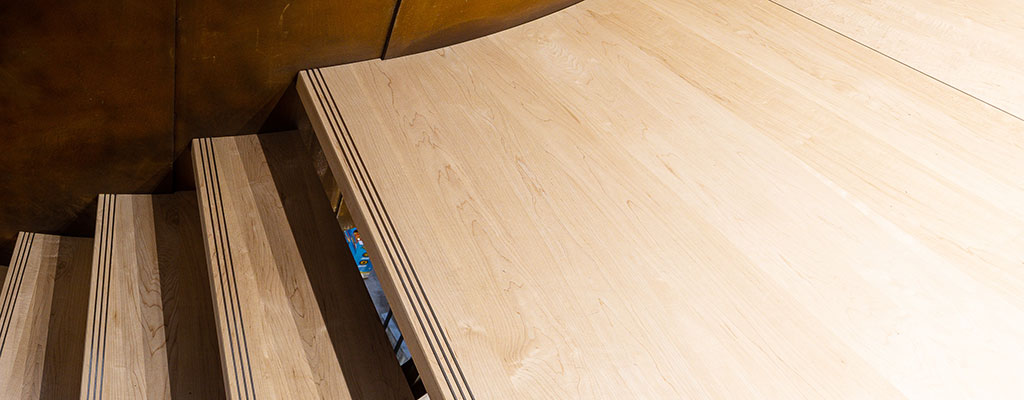
Nosing is the edge of the tread and can either be flushed or extended beyond the risers. The primary purpose of a nosing is to improve the safety of the staircase. Noising serves both aesthetic form and function, providing an extension to the tread to prevent tripping hazards and adding a finished look to the appearance of the stairs. The nosing can be fabricated from similar materials as the tread, depending on the design.
Read more about the Types of Materials and Finishes Used to Design the Best Staircase.
Risers
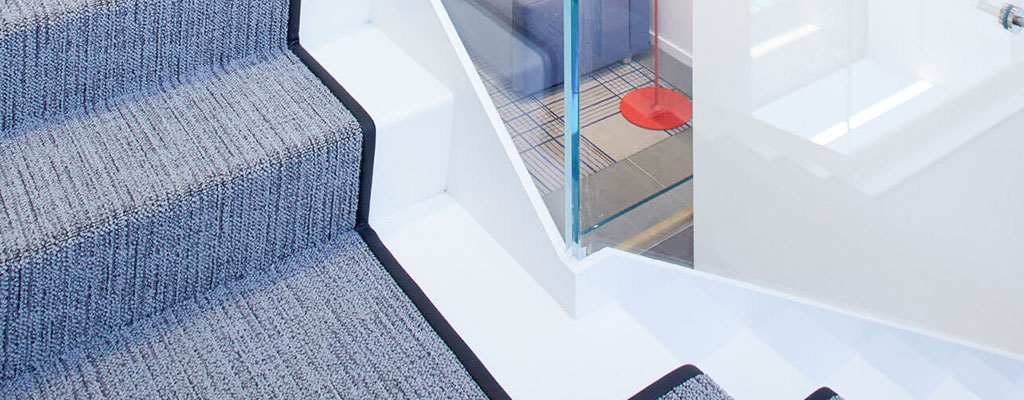
Risers are the vertical components that connect the treads, forming a vertical face of a staircase between one step and another. Risers can be opened between each tread or closed with a solid surface to hide gaps. Risers are typically fabricated with materials similar to treads and stringers.
Guardrails and Handrails
Staircase guardrails are vertical structures that provide support and guidance for people using the stairs. They can be made from different materials like wood, metal, or glass, and are designed to be a specific height for safety and strength. Guardrails are attached to stringers or posts and can be customized in different styles and designs to match the look of the staircase and its surroundings. Glass guardrails can have various appearances, such as clear, tinted, etched or films pattern sandwiched between glass layers.
Handrails are the portion of the railings that occupants can hold onto for support while using the staircase. Handrails are created for ergonomic comfort and ease of grip and with materials that either complement or be a contrast to the guardrail. Typically fabricated to attach to the guardrail, they can be fabricated into various shapes and profiles to provide optimal support and grip.
Materials for the handrail vary, including wood which can be stained or painted. It can be connected to posts within the guardrail or directly to it. Lighting can also be added to the handrail’s underside as an aesthetic feature if desired.
Posts
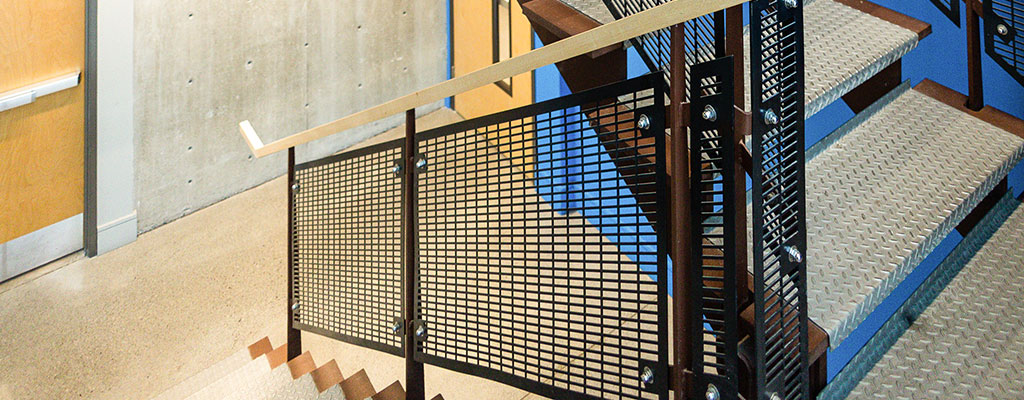
- Posts (or stallions) are vertical components that are sometimes required to support and stabilize the handrails and guardrails. The posts are fabricated in various shapes to accommodate the staircase’s aesthetic design and structural requirements. Posts are anchor points attached to the stringers and landings.
- The posts are inserted between the glass guardrail panels and are usually the same material and appearance as the handrail.
Guardrail Shoe

The guardrail shoe is a connector that attaches the guardrail to the stringers. It provides the necessary structural support for stability. The guardrail shoe is typically attached securely to the stringer to hold the guardrail in place.
Download our Guide today, and start your stair journey with Feature Walters, where anything is possible.
Smoke Baffle
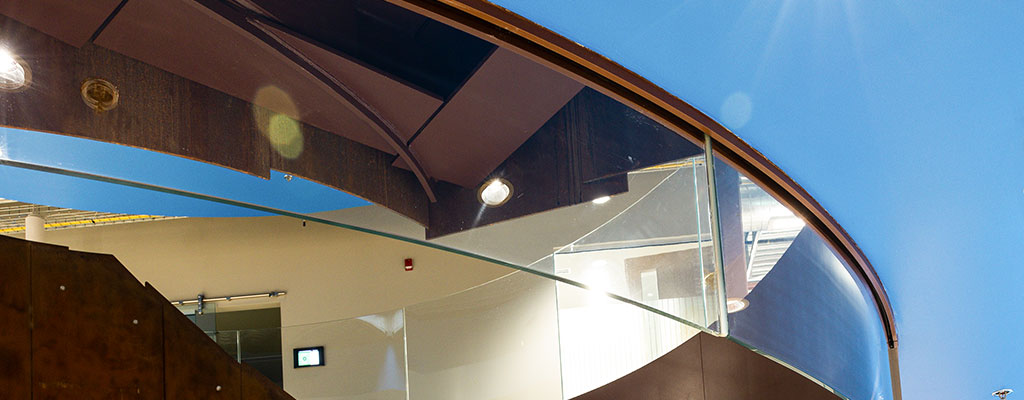
Also known as a draft stop or draft curtain, a smoke baffle is required for specified fire codes, often in the event of a fire emergency. The Smoke Baffle system provides subtle smoke barriers between staircase openings, level changes or divisions of areas in and around a staircase.
Read more about Different Types of Stairs Explained
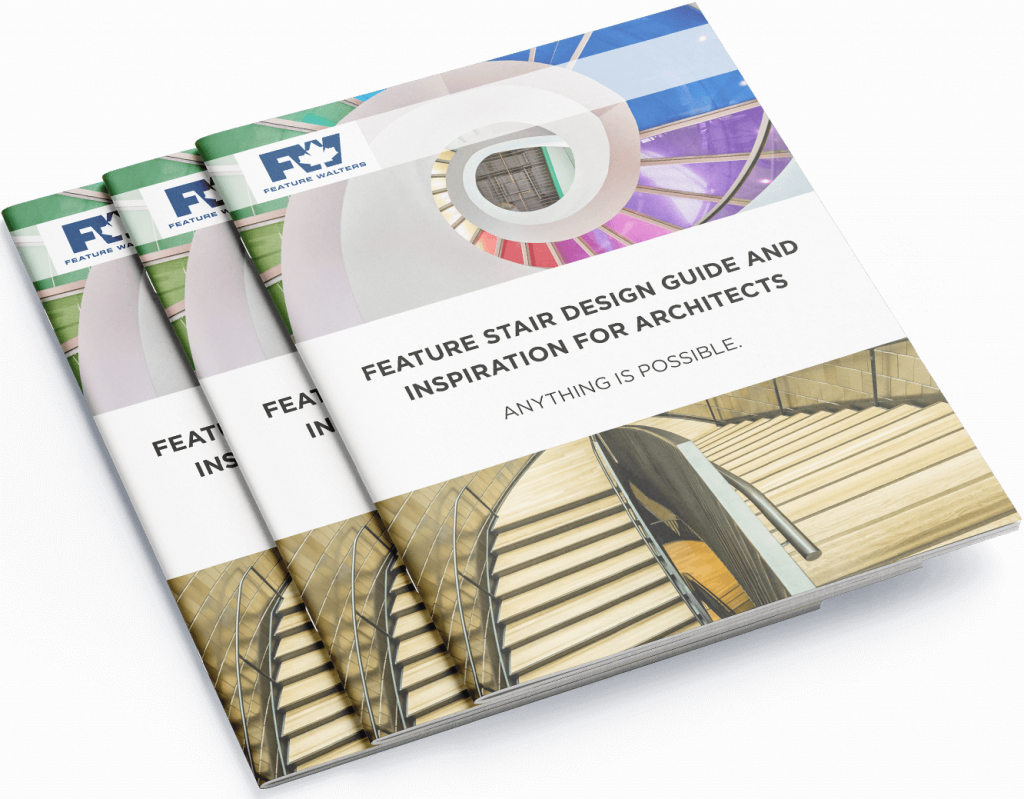
The Feature Walters Design Guide
ANYTHING IS POSSIBLE.
Our Feature Walters team has created this guide as a resource to help educate and inspire you with the many styles, materials and finishes available for architects seeking leading-edge architectural options for feature staircases.
"*" indicates required fields
